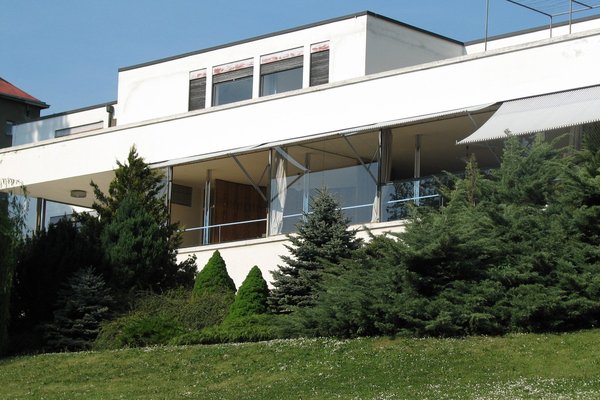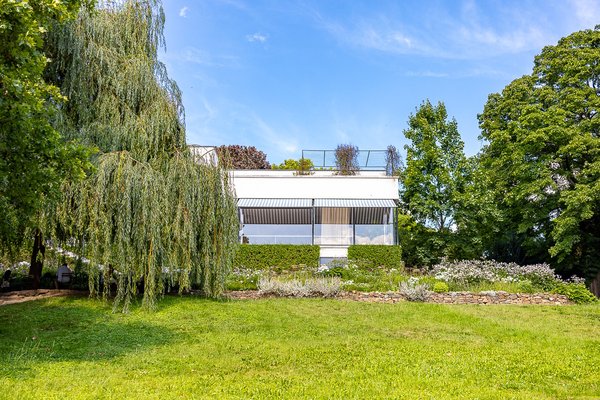Czechia
Tugendhat Villa
The Tugendhat Villa in Brno is a masterpiece of the 20th-century Modern Movement in architecture.
It was created by the German architect Ludwig Mies van der Rohe in 1930 for Fritz Tugendhat, owner of a Brno textile factory. Exquisite materials and modern technologies such as central heating and air conditioning were used in the construction of this house, with a base structure of reinforced concrete slabs supported by steel beams. The adjacent garden and original furniture were also designed by Mies van der Rohe.
Community Perspective: “If you have an interest in modernist architecture this is a must see”. It’s very popular to visit, so you must reserve months ahead of time especially if you want to join a tour given in English. Their customer service overall could be improved (e.g.: basic tours are only available in Czech, the need to purchase a costly separate photo ticket, and what happened to Clyde). Carlo has described The Villa from the Outside tour.
Site Info
Official Information
- Full Name
- Tugendhat Villa in Brno (ID: 1052)
- Country
- Czechia
- Status
-
Inscribed 2001
Site history
History of Tugendhat Villa
- 2001: Inscribed
- Inscribed
- Type
- Cultural
- Criteria
- ii
- iv
Links
- UNESCO
- whc.unesco.org
- Official
-
- tugendhat.eu — Villa Tugendhat
All Links
UNESCO.org
- whc.unesco.org — whc.unesco.org/
Official Website
- tugendhat.eu — Villa Tugendhat
News Article
- March 8, 2012 france24.com — Czech Bauhaus gem reopens after detailed renovation
- Feb. 6, 2007 ceskenoviny.cz — Brno's gallery returns artifact, furniture to Tugendhat heirs
- Dec. 8, 2006 ceskenoviny.cz — Owners descendants likely to claim UNESCO-listed Tugendhat villa
Community Information
- Community Category
- Secular structure: Residence
Travel Information
Reservation required
See …
Guided Tour Only
Recent Connections
-
Perfect Inscriptions
2001 -
Curtain wall
It is a large, curved glass wall that s… -
In the MoMA
In room 511, a model of the Tugendhat V…
Connections of Tugendhat Villa
- Individual People
-
-
Ludwig Mies Van Der Rohe
Designed by him
-
- Trivia
-
-
Depicted in Mizielinska Maps
See i.pinimg.com
-
In the MoMA
In room 511, a model of the Tugendhat Villa is displayed. It was created by the Office Mies van der Rohe in 1928-1930.See www.moma.org
-
Built or owned by Germans
-
- History
-
-
Declarations of Independence
The 'Velvet Divorce' of the Czech and Slovak republics was signed here
-
- Architecture
-
-
Reinforced Concrete
-
International style
-
Curtain wall
It is a large, curved glass wall that spans the width of the buildingSee g.co
-
- World Heritage Process
- Human Activity
-
-
Textiles
Fritz Tugendhat owned a textile factory
-
- Constructions
-
-
Chairs
The “Tugendhat Chair” designed in 1929 for the Villa.See en.wikipedia.org
-
- Timeline
-
-
Built in the 20th century
the villa was completed by the end of 1930 (AB ev)
-
- WHS Hotspots
- Visiting conditions
-
-
Reservation required
Especially for tours to the interior in the English language: best months ahead.See www.tugendhat.eu
-
Visitor Limits
There are only so many tours per day (which have to be booked months in advance). The website states: " A maximum of 15 people are allowed in one tour group due to capacity and safety reasons". -
Shoe covers required
-
Guided Tour Only
Can only be visited on frequent guided tours
-
- WHS Names
-
-
Named after individual people
Fritz Tugendhat, owner of a Brno textile factory and owner of this villa
-
News
- france24.com 03/08/2012
- Czech Bauhaus gem reopens after de…
- ceskenoviny.cz 02/06/2007
- Brno's gallery returns artifact, f…
- ceskenoviny.cz 12/08/2006
- Owners descendants likely to claim…
Recent Visitors
Visitors of Tugendhat Villa
- Adam Hancock
- Adrian
- Adrian Turtschi
- Afshin Iranpour
- Alexander Barabanov
- Alexander Lehmann
- Aljaz
- A. Mehmet Haksever
- Argo
- Aspasia
- Assif
- Astraftis
- a.thum
- Atila Ege
- Badwater
- Bamse
- BaziFettehenne
- Bill Maurmann
- Bin
- Bropyk
- Can SARICA
- Carlo Sarion
- Carlos Sotelo
- Cezar Grozavu
- chenqtao
- Christer Sundberg
- Christian Wagner
- Christoph
- Christravelblog
- Clyde
- Coppi
- Corinne Vail
- Csaba Nováczky
- CugelVance
- cutecid
- Dagmara
- Daniela Hohmann
- Daniel Chazad
- David Berlanda
- Dimitar Krastev
- Dirk-pieter
- Dolemite92
- Dorejd
- Dwight Zehuan Xiao
- Els Slots
- erdsaumnaht
- Errol Neo
- Eva Kisgyorgy
- Fan Yibo
- Femke Roos
- Frederik Dawson
- Gary Arndt
- George Gdanski
- GeorgeIng61
- Hadrianus
- Harald T.
- Harry Mitsidis
- henrik_hannfors
- Hubert
- Iain Jackson
- Ian Cade
- Ivan Rucek
- Jacob Choi
- Jakob F.
- Jakubmarin
- Jana and Matt
- Janina Lehmann
- janis
- Janos
- Jan-Willem
- Jarek Pokrzywnicki
- Jens
- Jezza
- JobStopar
- Joel on the Road
- jonas
- Jonas Hagung
- Jonas Kremer
- Jonas Martinsson
- jonathanfr
- Jon Eshuijs
- Kasia M.
- Kasper
- Ken DJ
- Klaus Freisinger
- Knut
- Kristin
- Kurt Lauer
- Lara Adler
- Laurey
- lichia
- Little Lauren Travels
- ljowers
- Loic Pedras
- Luboang
- Lucio
- Ludvan
- Luis Filipe Gaspar
- Maciej Gil
- Maciej Gowin
- marcel staron
- Martin
- Martina Rúčková
- Marton Kemeny
- Matejicek
- Mateusz
- MatusBeber
- MaYumin
- Michael Novins
- Michael Turtle
- Mikko
- Milan Jirasek
- Mohboh
- nan
- Nick M
- Nihal Ege
- Olli-Pekka Turunen
- Paola Laura
- Patrik
- Paul Schofield
- Peter Lööv
- Petteri
- Philipp Leu
- Philipp Peterer
- Pincze
- Piotr Wasil
- Porcho
- Purrfect
- Rafał Kałczuga
- Ralf Regele
- Randi Thomsen
- Riccardo Quaranta
- Roger Ourset
- Roman Bruehwiler
- Roman Raab
- Sandmann15
- serghei.belous
- Sergio Arjona
- Shandos Cleaver
- Shijie ZHU
- Solivagant
- Stanislaw Warwas
- Stijn
- Svein Elias
- Szabolcs Mosonyi
- Szucs Tamas
- Tamara Ratz
- Taotao Chen
- Tarquinio_Superbo
- Tatiana Nikulnikova
- Tcchang0825
- Tetena
- Tevity
- Thomas Buechler
- Thomas van der Walt
- Thorben
- Tim Allen
- tony0001
- Tsunami
- usagi1974
- Veronica
- VLabhard
- voyager
- WalGra
- Walter
- Wojciech Fedoruk
- Xiong Wei
- YaroMir
- Yevhen Ivanovych
- ynteligent
- Zhenjun Liu
- Zoë Sheng
Community Reviews
Show full reviews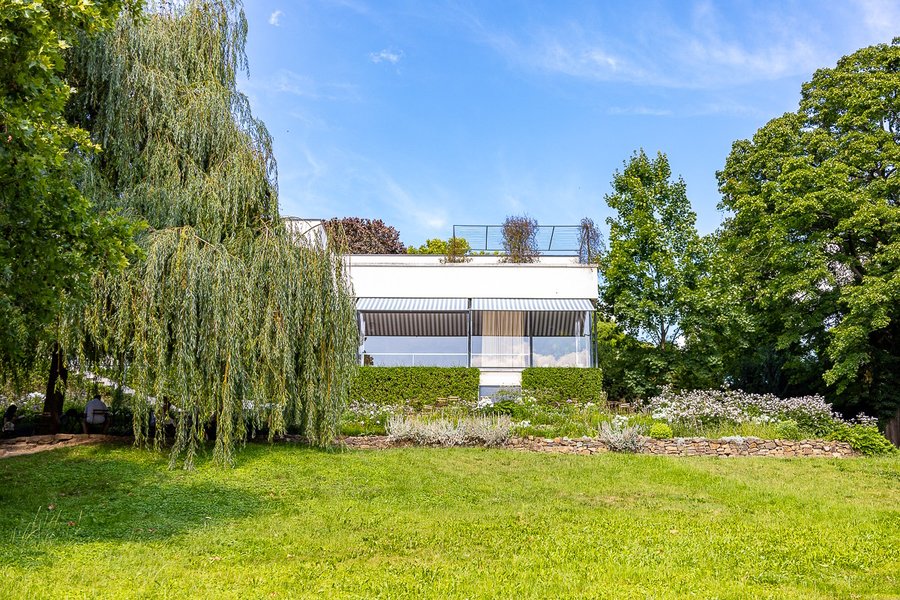
We visited Brno on a sweltering day in July 2025 to catch up with a friend and as a pitstop between Prague and Vienna. Of course, it'd be sacrilegious not to visit Villa Tugendhat. However, as this was a last minute trip decision, we didn’t have the foresight to book one of the interior tours in advance, so we opted for The Villa from the Outside tour. While it was a more modest experience, we thought it was still a worthwhile one. It was also a nice change of pace from all the palace and church hopping we’d been doing.
The tour
We started the tour with the guide huddling us in front of the villa’s main door. She began with a bit of background on Fritz Tugendhat and Greta Löw-Beer, their families, and the villa itself—mostly within the context of their status as a wealthy Jewish family and their practical and aesthetic vision for a home. The guide then talked about the villa's architect, Ludwig Mies van der Rohe, and how he was given the freedom to design not just the building but also the furniture. That creative liberty allowed our boy Mies van der Rohe to craft something that, in my opinion, was ahead of its time—something that could’ve been built last year rather than nearly a century ago.
The tour, which lasted about 40 minutes, took us through the terraces and gardens of the villa. The upper terrace offered an outstanding view of the city. Our guide …
Keep reading 0 comments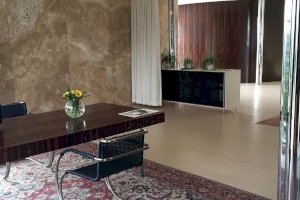
This villa is a masterpiece of modern architecture and it deserves its WHS status. Actually it is one of the best sites that Czechia can offer. Well, Tugendhat is not the only structure built in the international style in Czechia, but it stands out from almost all aspects. I would propose only one other Czech modernist house to become the world heritage site - Muller Villa by Adolf Loos in Prague. Both houses shares a lot and both can be called as examples of functionalism, but they emanated completely different spirit to me:
While Tungendhat is hidden from the outside world showing only one decent floor to the street, Muller is a white cube with bright yellow windows standing proudly on the slope above the road. The interior of Tugendhat is flat, vast and sterile, somehow broken only by onyx and macassar walls (PHOTO), but at the same time it is open to the garden via the "non-existing" glass wall. Muller villa inside is very colorful and intricate being a fine example of so called Raumplan. For normal life, I would definitely prefer Muller to Tugendhat. There is also the huge contrast between Tugendhat Villa covered by astronomical budget and built for a single family, and working-class colonies built in Brno at the same time - Tugendhat as the fine example of elitist architecture!
I remember quote by Nan that Tugendhat Villa is surprisingly small. I would oppose that it is probably only "an optical illusion". The biggest …
Keep reading 0 comments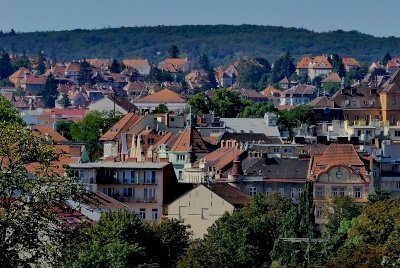
I visited this WHS in Summer 2019. I knew that I needed to book in advance to secure a spot to visit the interior. That said, since the villa is privately owned and poorly managed by young unwelcoming staff who have no clue what customer care is, don't be surprised if your visit get's cancelled as late as one day before simply to accomodate a private company or a private function. This is what happened on the day I was supposed to visit.
Basically, while I was busy travelling from one WHS to another, as late as 15:45 on the day before I received an automatic email that my booking was cancelled. On their rather non-user-friendly website ( perhaps a premonition of the staff in general EXCEPT the elderly gardeners who look after the villa surroundings), a short notice was displayed saying that the Villa was closed and off-limits for tourists as a last-minute event had been organised for blind locals. That meant not even the gardens! Since I was staying in Brno only for 1 night and all the other days were fully booked I was forced to forget visiting the villa's interior and had to make up for that by peaking through the huge glass wall and windows from the gardens as though I hadn't booked ahead.
Obviously I wasn't happy, but what frustrated me the most was the I-couldn't-care-less-attitude of the very young staff manning the Tugendhat villa ticket desk and souvenir shop. Most of …
Keep reading 0 comments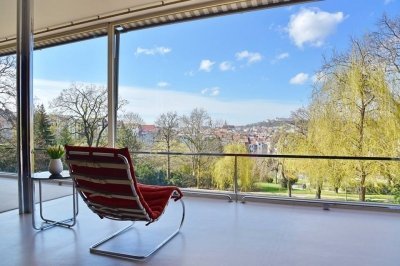
One of the things I found during my weeks long trip in Czechia was that it is a country of Baroque, its World Heritage Sites are mainly built or have some element in this style, as a result when I visited Tugendhat Villa, the visit was like a fresh air. On the way to the villa from my hotel which I carefully picked because of its location that I could walk to the villa easily after leant a problem of lacking carpark, it was clearly that Tugendhat villa was located in the nice wealthy neighborhood with many nice houses around. When I finally approached the villa, its appearance was quite surprising, while the architectural design of this white building was quite striking, it one story height remind me some kind of garage or storage than a living house. When the gate was opened, suddenly almost twenty persons appeared from nowhere for the guide tour, all of them were Czechs and Slovakians.
After showed the e-ticket and paid for extra photo fee, surprisingly I was the only person who made advance booking! The lovely guide asked all visitors to wait at the rear outdoor terrace where I could see the great view of Brno. The tour was only in Czech, but the guide was kind enough to explain everything I questioned in English. After briefing welcome explanation, the guide took us inside to see the first floor or the street level floor. I was surprised that all the bedrooms and …
Keep reading 0 comments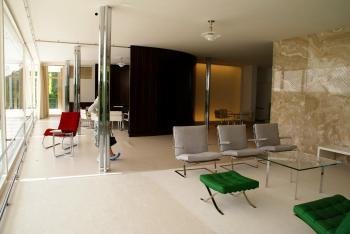
As a fan of modern architecture, I could hardly wait until after years of restoration the Tugendhat Villa has been re-opened to the public. It must be said that they have really done a great job. Architects, preservationists and historians have studied old plans, archives and historical photographs and were able to renovate the villa to its original state. The massive damage that resulted from decades of disinterest, some strange uses (e.g. by a dance school or a children's hospital) and previous, inappropriate restorations were eliminated. Some parts of the original interior could be retrieved, others were (or will be) replaced by faithful replica. The greatest success was that the makassar-ebony wall of the dining room, which was missed since the Second World War, has been recovered. Towards the street, the villa appears like a simple bungalow with garage. And also the lobby and the upper floor show nothing exceptional: white walls, a little chrome, the usual furniture of bedrooms and children's rooms. But after climbing down the elegant staircase, you have a real wow-effect: A large, light-flooded room, supported by thin, chromium-plated columns and separated only by an onyx wall, elements of exotic wood or fine curtains. And the elegant furniture, also designed by Mies, some specifically for the villa. The room has a large, continuous window front on two sides providing a vast panorama of the city of Brno. Mies van der Rohe has built the villa cleverly into a steeply sloping property, the white-painted villa is a …
Keep reading 0 comments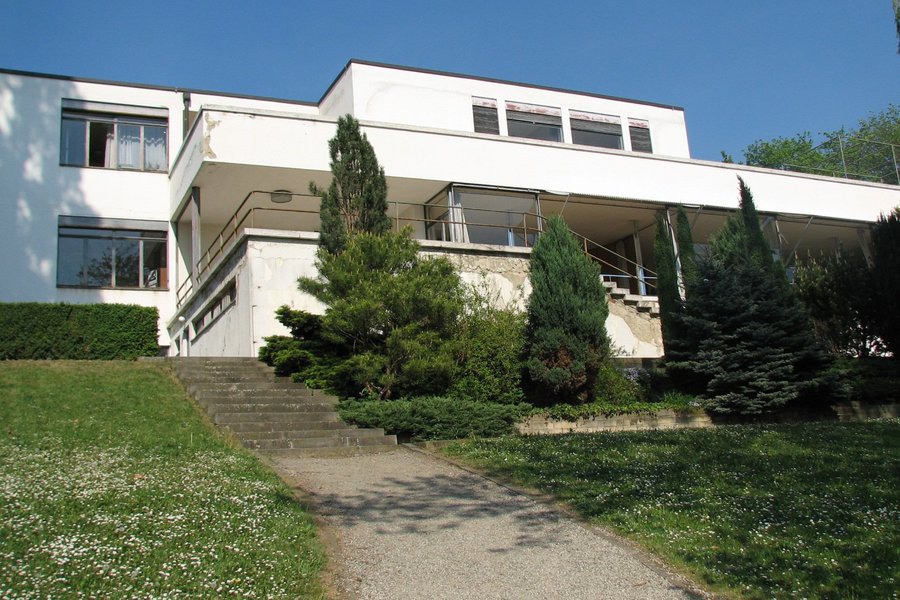
The villa is now re-open after extensive renovations and it is necessary to book ahead for tours, which cost about $20.00 (I booked on-line about three weeks before my April 14, 2012 tour.)
The only tours in English are the so-called "technical" tours which last about 90 minutes (the other tour is about an hour). The technical tour includes the (state of the art at the time) air-conditioning and heating facilities, whose mechanisms were explained by the guide in an easy to understand manner. My tour group had about ten people in it so it did not feel crowded.
The villa is in a quiet residential area of Brno, easily accessible in about ten minutes by several tram and bus lines, or about a 40 minute walk from the train station through the old town (very nice) then for about 15 minutes on a run down stretch of a wide, much trafficked ugly avenue and then about five minutes more along a tree-lined street.
Even those who are familiar with, or fans of Mies Van de Rohe will find a visit fascinating. My guide was excellent and well informed. Besides explaining the minimalist philosophy of Van de Rohe, and how he made it a reality in this residence, the guide also provided a history (very sad for the most part) of the house in the period following the Tugendhat's flight from Nazi-occupied Czechoslovakia and abandonment of the villa up until the present. It is a microcosm of what happened to …
Keep reading 0 comments
As a US expat living in Brno, CZ and working in Europe for the last five years, I took exception to the review and characterization of the City of Brno by the author of the article. The author unfortunately did not take the time to explore and really "taste" the culture and history of the City of Brno and it's people. In fact, it is clear to me the author spent very little time outside his/her hotel and speaking to the locals or looking for the history that was part of the charm and glory of Brno during it's days up until the mid 1930s when the city still bustled with culture and prosperity as part of the Austo-Hungarian Empire. The city suffered until the 1990s with the lack of investment before the Velvet Revolution.
This said, there is a huge amount of history and culture to be found walking it's streets and surrounding areas. There are castles (Hrad Špilberk & Hrad Veveøi), parks, threatres (open-air summer Shakespearian performances), historic Napoleonic battlefields (Slavkov-Austerlitz), firework festivals (Ignis Brunensis), Undergroud Caves with amazing Stalactites(Punkevní jeskynì),(a world class brewery (Staro Brno), Aquatic Centers not to mention the wonderful Moravian food and drink (Don't miss the Pork Ribs - Žebra and Potato pancakes - Bramboráky)that are enjoyed around the year in festivals and the local restaurants.
On a final note, if you go to Brno or any foreign country for that matter, realize that you are in a foreign culture and one with it's …
Keep reading 0 comments
I drove from Vienna to the house for a guided tour that was in Czech and translated into very bad German. We were given a card-like menu to read from. Visually the house is in bad shape (this was September 2008)there is exterior water damage and structural damage.
The most impressive things about the house are the fixed pieces; dining room table, curtain rods on the ceiling to create 'partions' in the open floor plan, the air conditioning system, and the electronic windows that roll down like a car window!
Go there when the restoration is complete, it is worth it!
Keep reading 0 comments
I also have to take exception to the first contributor above - in seventeen years living in the city I have yet to come across images such as are described. In fact, I don't believe that person has even visited the city - who on earth carries around beer cans? Beer is 99% sold in bottles! I have never had Czech Chinese food in Brno, but I have had plenty of very decent Vietnamese fast food, cooked by Vietnamese. The tram system is second to none, rendering car use superfluous, and unless you go looking for them the sex clubs are pretty much invisible, and are certainly not in the centre. Free internet use for females? I've heard it all now...
Anyway- rant over - as for the Villa - yes, it looks pretty unprepossessing from the outside, and you have to bear in mind that it has been through the mill over the years (even having been used as stabling for horses after the war) so it is no surprise that it might look a bit shabby in places so a thorough re-fit is welcome.
The inside though is stunning, as is the view over the city's dominant features - the Špilberk castle and the spiky cathedral - especially in the summer or on a crisp winter's day. Once all the original glasswork is replaced it will truly live up to its reputation.
As a Czech speaker I obviously have no problem with the tour (plus I have worked …
Keep reading 0 comments
I just returned from a summer holiday to Czech, Slovakia and Poland. Initially Tugenhat was not on my itinerary because they have been scheduled to close for renovations for some time. However last week when I was in Brno, I found out that they are still open. Apparently due to economics, the site city continues to postpone the renovations. The latest date is the end of next month but you never know. Anyhow, I took the opportunity to visit the site on Saturday morning and it was located on a tree lined street of suburban homes. The only reason you will notice the villa is that there is a sign on the street. the villa is totally not noticeable from the street.
The description of this site is already well documented by all the previous comments. my only adds are: biggest surprise--the wall of the living room and dining room is all glass from ceiling to floor for the entire wall of over 30m with no moldings. Sections of this wall (5m wide X 3M high) can be lowered electrically to waist height which opens up the room to the outside. Quite an achievement in the 1920s. Biggest disappointment-- the villa is in a very poor condition. The walls are cracked, paint peeling, wood rotting etc
I was told it would take 3-5 years to restore.
I am glad I made it before they closed but its not quite the Taj Mahal.
Keep reading 0 comments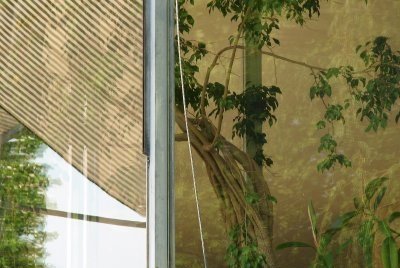
The villa is located in a residential area of Brno, and can easily be reached by public transport or by foot. Bear in mind that an essential part of its layout is the difference in height, so the last part of the walk is uphill.
I had arranged a guided visit. There were about 15 other interested visitors, mostly Czech. The whole tour was in Czech, the foreign visitors had to make do with a small booklet. The guide points out all the little details, unfortunately, I missed out on some by not understanding the Czech explanation.
The house itself is a great treat of course. That view from the living room into the garden! Just like you're living in a country mansion, while in fact the house is located on a rather average city street.
Brno itself is a rather funny place to visit. One of my colleagues described it as a 'city full of prostitutes and tramps'. How bad can it be, I thought. Well, if you're attracted to people walking around with beer cans, or tasting Czech experiments in Chinese cookery, or have an above-average interest in trams, or like to take advantage of free internet use for females AND don't mind a few sex clubs here and there - then you really have to check it out!
Keep reading 0 comments
One day we have finally visited the Tugendhat Villa in Brno, in the quarter of Černa Pole, which is situated only 500 metres from my grandparent's house. This building constructed by Ludwig Mies van der Rohe in 1930 for the family Tugendhat is a masterpiece of the international style in the modern movement. It is a detached house with a floor area of 2000 sq. m. in a residential zone; it has a flat roof and three floors (one facing to the street and three to the garden) with different plans. The entrance is from the street on the north side of the lot, that forms a garden. The uppermost floor includes a terrace, partly open and partly covered, and a balcony. Inside there are an entrance hall, family bedrooms, services, a master bedroom, a dressing room, the garage and the caretaker's lodging. Two stairways bring to the main floor, that has three parts: a part is the main living area (that has large electrically operated windows) with a reception room, a music corner, a study, a library, sitting areas, dining room, services and a winter garden (280 sq. m.), a part that has kitchen facilities and the last one is the servants' area. A stairway brings to the garden floor, that has utility rooms and is used for technical purposes. The house is made of reinforced concrete with steel frames and it's supported by polished still pillars; a steel skeleton also carries ceramic ceiling panels. The exterior of the …
Keep reading 0 comments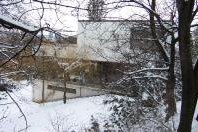
The Vila was built 1928-30 and it is a prime example of the Modernist International style of architecture. It was designed by Ludwig Mies Van Der Rohe, one of the most important architects of the 20th century; he worked closely with the Bauhaus movement and was a pioneer in glass curtain skyscrapers that came to dominate many cities through-out the world.
The Villa is set out on three floors the top one is a reception area with the bedrooms. The main floor is the next one down. It is a large open plan room divided only by two non structural walls. One of these walls is made of Onyx, and at the time of construction this one small section cost the equivalent of a family house. Despite the sparse interior, no expense was spared on this residence. To put the cost of this place in context, a generation or two before the Tugendhats’ would probably have commissioned a palace. The views over Brno from the main room are probably the best available and the huge ceiling to floor windows make the most of it. The furniture in the Vila is the height of modernist design and contain Mies’ superb Brno chair which is still in production today.
The third floor is just for maintenance and ventilation purposes so you don’t get to see it.
The Villa is on the outskirts of Brno and is pretty easy to reach. You will have to RESERVE a place to be able to see …
Keep reading 0 comments
Stunning, wonderful experience to see and experience this unique place.
Tours are well organized and informative; however, you must book a tour in order to enter. Groups are limited to 15; if one is not available in your language, still join--printed information is available, and language shouldn't keep you from this experience.
TUGENDHAT VILLA,Černopolní 45, phone +420 545 212 118, open Wednesdays - Sundays 10 a.m. – 6 p.m., last admission at 5.15 p.m. Guided tours only, starting each sharp hour, maximum number of persons per group 15. Advance telephone bookings only!
The trip from Prague can be made by train--out early in the morning; back in evening. This allows some time for exploring the town--you could also spend a couple of days here. G. Mendel, the monk who discovered genetics through his study of peas, lived and worked here-- there is a well done little museum at his monestary.
Keep reading 0 comments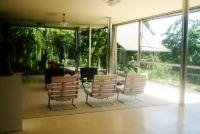
Over the years the World Heritage List have taken me to a number of brilliant architectural sites - from the Bauhaus sites in Dessau and Weimar, the Rietveld Schröderhuis in Utrecht, Victor Horta’s brilliant Art Noveaux houses in Brussels to the exceptional architectural pearls in Barcelona by Antoni Gaudí. I am absolutely sure that there are much more to appoint in this category and I hope this is something Unesco will prioritise more in the future.
The Tugenhat Villa in Brno is a functionalistic, open-plan Bauhaus building from 1929, that was built by the German architect Ludwig Mies van der Rohe for a rich newlywed couple. With WWII and the communist period to follow, the beautiful villa in the suburb of Ĉerná Pole, have had quite a different history than maybe once intended but over the last 10 years it has been carefully restored to the state it was once meant to be in.
Guided tours are made every hour, unfortunately only in Czech, and I hope that tours in additional languages will be available in the future as well as a removal of the ridiculous photo-ban that no one seemed to follow anyway. At the time of my visit, many other disappointed people had to walk away since only groups of approx 20 people are allowed in per hour. My advise for your visit is therefore to pre-book well in advance.
Keep reading 0 comments
I have to admit that I´m not the biggest fan of modern architecture and I don´t really know much about it. But since I was in Brno anyway, I thought I could see another WH site and go to the Villa Tugendhat. It´s a short tram ride from the center, or about a 25-minute walk. Frankly, I wasn´t overly impressed by what I saw, but I didn´t expect otherwise. I thought it was just an ordinary building that was pretty fancy for its time. The big room downstairs and the view of the garden are nice, though. I guess some like modern architecture, some don´t. As usual in the Czech Republic, there were guided tours in Czech only, and pretty mediocre brochures in German and English. The site is still open until the end of October before it will be closed for a few years for restoration works. Maybe the visitor services will improve then. Brno, by the way, is in my opinion quite a pleasant city (with the notable exception of the Soviet-style train station), with a huge cathedral and the impressive Spielberg fortress (now, that would be World Heritage material in my mind, but it isn´t even on the Czech tentative list...).
Keep reading 0 comments
